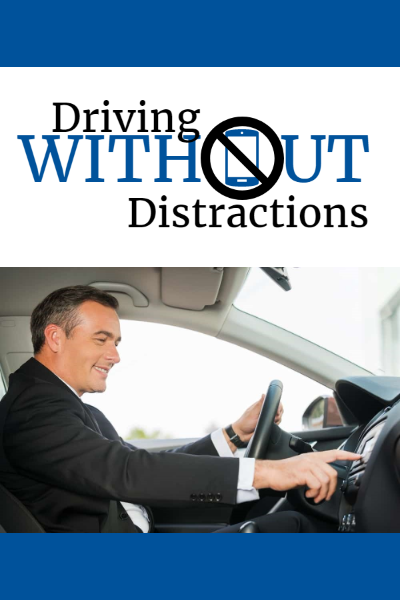Distractions Inside the Vehicle

Distractions affect a driver’s ability to safely perform their primary task of operating the vehicle and arriving safely at their destination. Evidence shows that drivers whose attention is diverted away from driving for more than 2 seconds are at an increased crash risk.
Distractions for drivers fall into two basic categories: inside the vehicle and outside the vehicle. Inside the car, there are several obvious distractions and some others that many people tend not to think of in this light but which can also cost lives. These include:
- Interactive communication devices, cell phones, pagers and navigation systems
- Grooming, applying makeup, shaving
- Adjusting the radio system – changing the channel, changing CDs
- Occupants - infants, children, teenagers, adults
- Eating and drinking
- Adjusting vehicle controls – heat/air conditioning, steering wheel tilt, mirrors, seat position
- Reading books, magazines, newspaper
- Smoking
- Pets that are not contained
- Reaching for objects
- Looking at a GPS, map, or directions
- Writing
- Loud music
- A heated discussion with a passenger
- Looking for controls or switches in an unfamiliar vehicle
- Feeling fatigued, unwell or stressed
The following is a list of potential consequences of driving while distracted.
- Inability to avoid collision with stopped vehicles
- Not maintaining proper lane position
- Inability to make quick decisions
- Reduced situational awareness
- Inability to execute emergency maneuvers
- Delay in recognizing and obeying traffic signals and signs
By giving advanced thought toward addressing in-vehicle distractions, drivers can maintain focus on the driving task. These ideas include:
- Do not text or use cell phones. If you need to use your cell phone, stop in a safe parking area.
- Avoid arguments or distracting conversations with passengers.
- Instead of eating while driving, leave a little early to allow yourself time to stop to eat.
- Be sure children are properly and safely buckled up and give them books, toys or games to occupy their time.
- Properly secure pets in a pet carrier or portable kennel before moving your vehicle.
- Adjust vehicle controls, such as mirrors, heat or air conditioning before you begin your trip. Take advantage of normal stops to adjust controls or ask your passenger to adjust controls.
- Program your GPS and plan your route before you begin driving. If you need to look at a map or directions stop in a safe parking area.
- Do not talk with occupants of other vehicles.
- Do not wear headphones to listen to music or podcasts.
- Stay focused, pay attention, and expect the unexpected.
In Summary:
The potential for drivers to become distracted will increase over time with advances in communication and entertainment devices. With some forethought and pre-planning, drivers can prevent many potential distractions.
If you are driving with friends or family in the car, you are responsible for their safety, don’t get so engaged in talking that you lose your concentration on the road. Your distraction could cause an incident seriously injuring or killing others.
